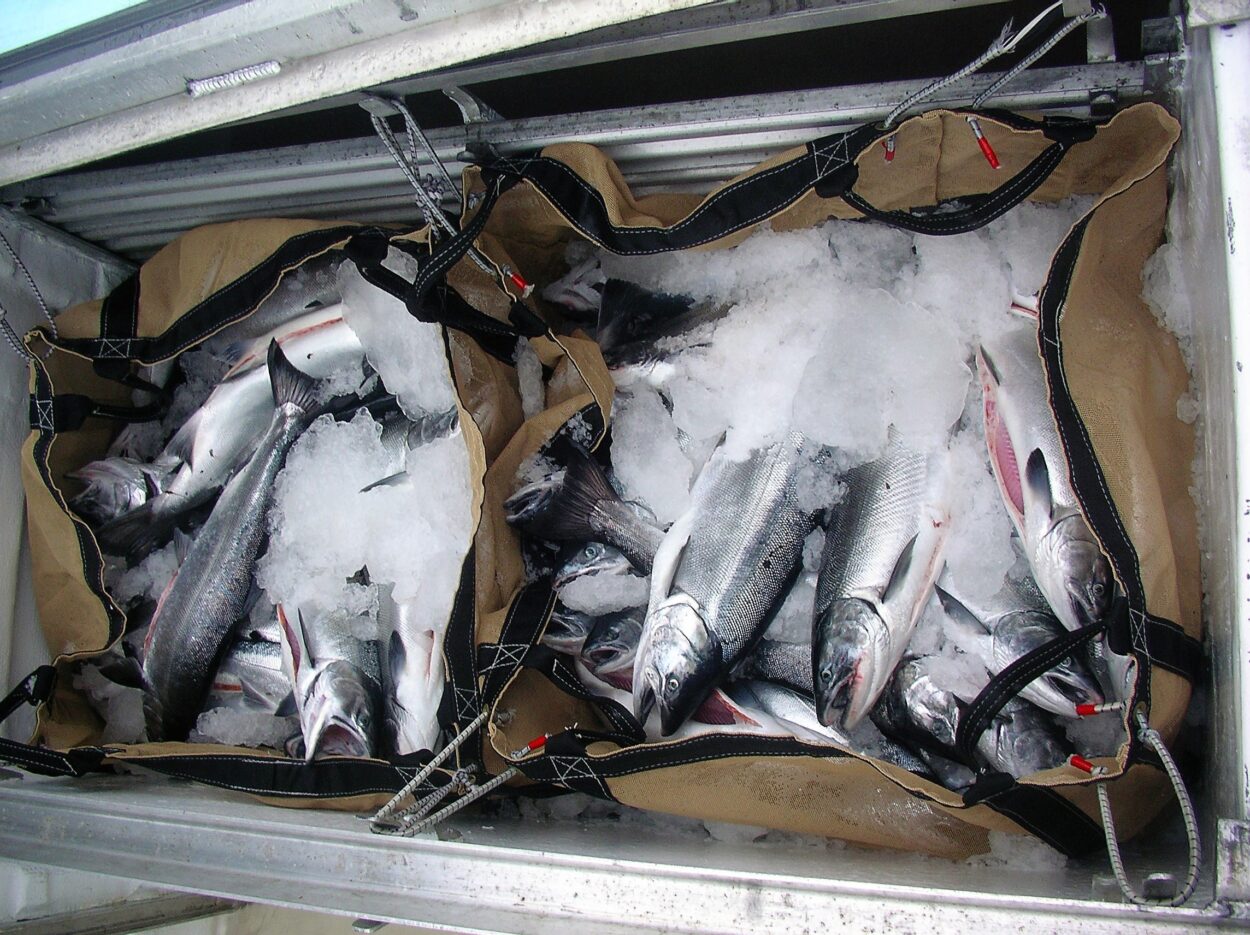
Alaska’s seafood processors were hit hard in 2020. Meanwhile, markets for seafood saw some growth during the pandemic. Recent surveys show that those industry outcomes could be seen again this year. KFSK’s Angela Denning reports from Petersburg:
Alaska’s seafood industry has a lot of moving parts. There are the fishermen, the processors, the market, as well as the fish themselves.
By all accounts, the pandemic has been hard on the processors. Last year, they spent about $70 million in mitigation measures and responding to the pandemic. But this year it’s expected to be even more…over $100 million.
In fact, a lot of it has already been spent this year.
“There were challenges and some plant closures that happened despite all these protocols,” Lesh said.
Dan Lesh is with McKinley Research Group that surveyed processors and others in March about the effects of COVID on Alaska’s seafood industry. He says the flat fish industry was hit hard with outbreaks in January causing expensive plant closures. Those costs are in addition to the ongoing price for pandemic mitigation.
“A lot of these costs are already baked and my understanding is that most the mitigation measures will be continued.”
So, basically there are more months this calendar year dealing with the pandemic.
Processors surveyed said their peak employment last year dropped 31 percent. That’s from intentionally smaller workforces as well as problems recruiting and retaining workers. Two-thirds of processors received COVID relief money but it only covered 24 percent of their costs, on average.
“None of the processors said it covered even half of their costs. Thirty-five percent was the highest estimate we got in our survey,” Lesh said.
But Lesh says there’s hope that more relief money could come this year with newer programs.
As for the seafood market? While it’s hard to summarize all species together, some areas saw growth. Salmon, for example.
“Every indication is that everything’s been sold out from last year,” Lesh said.
“There were times where we saw 30-40 percent increases in frozen and fresh seafood sales,” said Ashley Heimbigner with the Alaska Seafood Marketing Institute, which contracted the research group for the surveys. She says online seafood sales skyrocketed during the pandemic.
“So, people are also getting more comfortable buying seafood online,” said Heimbigner, “and that’s through Instacart or their local grocer but also through community supported fisheries and direct marketers ordering direct from fishermen as well so people are seeking out new ways to find these new seafood purchasing options.”
That’s online though. The food service market dropped out as restaurants were closed. And that instability affected prices paid to fishermen.
Then there’s the fish. 2020 is considered the worst year for salmon since the 70s and the state is seeking eight separate fisheries disaster declarations.
The forecasts for some species doesn’t look very promising. Chum are expected to be down 23 percent from the 10-year average and pinks, which return every other year, could be down 41 percent from recent odd-years.
But it’s hard to predict what exactly the season will be. One thing’s for sure: vaccinations are going to play a major role.
One of Alaska’s biggest processors–Trident Seafoods–is requiring a fully vaccinated workforce for its Petersburg plant. Last year workers stayed in a closed campus. In an email, spokesperson Shannon Carroll says they’ll keep campus open this year with some restrictions as long as the town is in a low risk status.
Tonka Seafoods, a smaller local processor isn’t requiring vaccinations but is strongly encouraging them with incentives. Co-owner, Seth Scrimcher, says about 80 percent of its workforce is currently vaccinated.
Petersburg’s largest processor, OBI, which employs hundreds of workers would not comment for this story. However, the local Emergency Operations Center said the company told the borough that they planned a 90 percent vaccination rate for resident employees and 100 percent for transient workers. And if they achieve this then they would likely have an open campus.
But ultimately, how 2021 turns out for the multi-billion dollar industry will remain unknown. . at least for now.
“You know I wish I had that crystal ball,” she said.











